Wendi Ji
Micro-Behavior Encoding for Session-based Recommendation
Apr 05, 2022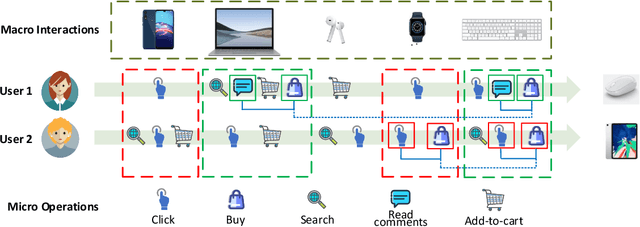
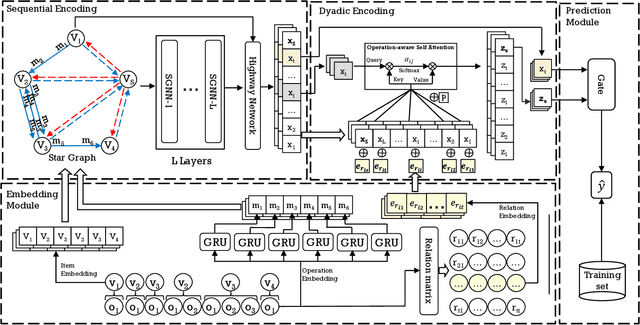
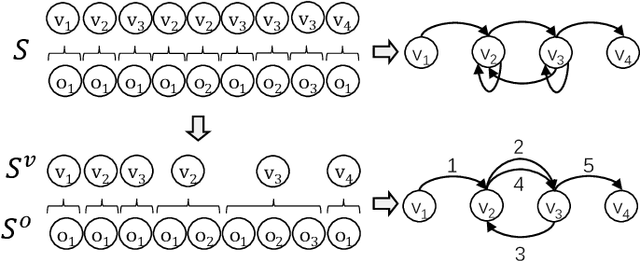

Abstract:Session-based Recommendation (SR) aims to predict the next item for recommendation based on previously recorded sessions of user interaction. The majority of existing approaches to SR focus on modeling the transition patterns of items. In such models, the so-called micro-behaviors describing how the user locates an item and carries out various activities on it (e.g., click, add-to-cart, and read-comments), are simply ignored. A few recent studies have tried to incorporate the sequential patterns of micro-behaviors into SR models. However, those sequential models still cannot effectively capture all the inherent interdependencies between micro-behavior operations. In this work, we aim to investigate the effects of the micro-behavior information in SR systematically. Specifically, we identify two different patterns of micro-behaviors: "sequential patterns" and "dyadic relational patterns". To build a unified model of user micro-behaviors, we first devise a multigraph to aggregate the sequential patterns from different items via a graph neural network, and then utilize an extended self-attention network to exploit the pair-wise relational patterns of micro-behaviors. Extensive experiments on three public real-world datasets show the superiority of the proposed approach over the state-of-theart baselines and confirm the usefulness of these two different micro-behavior patterns for SR.
Community Trend Prediction on Heterogeneous Graph in E-commerce
Feb 24, 2022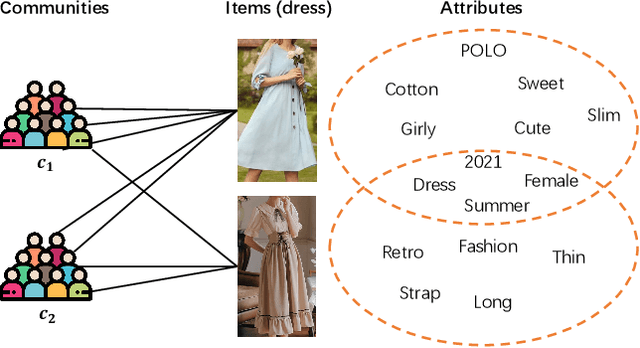

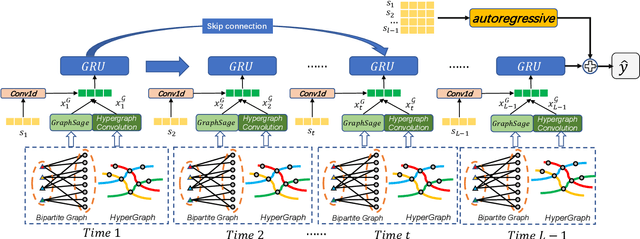

Abstract:In online shopping, ever-changing fashion trends make merchants need to prepare more differentiated products to meet the diversified demands, and e-commerce platforms need to capture the market trend with a prophetic vision. For the trend prediction, the attribute tags, as the essential description of items, can genuinely reflect the decision basis of consumers. However, few existing works explore the attribute trend in the specific community for e-commerce. In this paper, we focus on the community trend prediction on the item attribute and propose a unified framework that combines the dynamic evolution of two graph patterns to predict the attribute trend in a specific community. Specifically, we first design a communityattribute bipartite graph at each time step to learn the collaboration of different communities. Next, we transform the bipartite graph into a hypergraph to exploit the associations of different attribute tags in one community. Lastly, we introduce a dynamic evolution component based on the recurrent neural networks to capture the fashion trend of attribute tags. Extensive experiments on three real-world datasets in a large e-commerce platform show the superiority of the proposed approach over several strong alternatives and demonstrate the ability to discover the community trend in advance.
Hybrid Sequential Recommender via Time-aware Attentive Memory Network
May 18, 2020


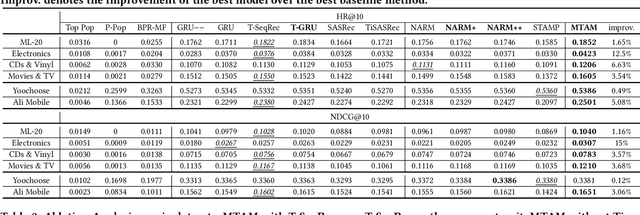
Abstract:Recommendation systems aim to assist users to discover most preferred contents from an ever-growing corpus of items. Although recommenders have been greatly improved by deep learning, they still faces several challenges: (1) Behaviors are much more complex than words in sentences, so traditional attentive and recurrent models may fail in capturing the temporal dynamics of user preferences. (2) The preferences of users are multiple and evolving, so it is difficult to integrate long-term memory and short-term intent. In this paper, we propose a temporal gating methodology to improve attention mechanism and recurrent units, so that temporal information can be considered in both information filtering and state transition. Additionally, we propose a Multi-hop Time-aware Attentive Memory network (MTAM) to integrate long-term and short-term preferences. We use the proposed time-aware GRU network to learn the short-term intent and maintain prior records in user memory. We treat the short-term intent as a query and design a multi-hop memory reading operation via the proposed time-aware attention to generate user representation based on the current intent and long-term memory. Our approach is scalable for candidate retrieval tasks and can be viewed as a non-linear generalization of latent factorization for dot-product based Top-K recommendation. Finally, we conduct extensive experiments on six benchmark datasets and the experimental results demonstrate the effectiveness of our MTAM and temporal gating methodology.
 Add to Chrome
Add to Chrome Add to Firefox
Add to Firefox Add to Edge
Add to Edge